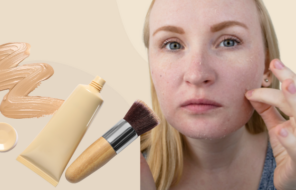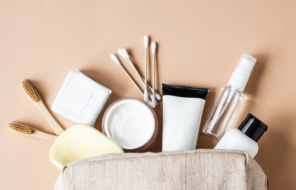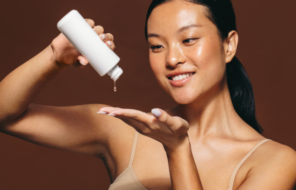Proper skin moisturization can make all the difference in your skin’s overall appearance. According to the American Academy of Dermatology Association, sufficient moisture can help eradicate dullness, dryness, and flakiness to catalyze healthier-looking skin. This article features expert tips on how to master skin hydration — with dos and don’ts for maintaining sufficient moisture year-round and recommended moisturizers for each skin type.
How to choose the right moisturizer for you
Finding a good moisturizer starts with knowing and understanding your skin’s unique characteristics. We interviewed dermatologist Cory Gaskins, MD, who gave us insight on what to prioritize when shopping for products. “When selecting a moisturizer, it’s important to first choose one based on your skin type,” he said.
Dry skin
If you have dry skin, avoid moisturizers that provide very little coverage. This skin type produces minimal oil (or sebum) throughout the day. Thus, it demands a thicker moisturizer to compensate for the lack of moisture effectively. “Dry or mature skin may benefit from a cream or lotion with heavier ingredients, such as shea butter, that will help lock in moisture,” Dr. Gaskins explained.
Oily skin
Oily skin is the most acne-prone due to excess sebum production. This results in clogged pores and can trigger blackheads, whiteheads, and other types of acne. Thus, oily skin doesn’t need as much moisturizer as dry skin since it produces enough moisture on its own.
We’re not suggesting that you skip moisturizing altogether, but you don’t need to lay it on thick, either. Balance is key! “If you have oily or acne-prone skin, look for an oil-free formula that won’t clog pores and cause breakouts,” Gaskins said. We suggest trying a lightweight formula like a gel or serum.
Combination skin
Combination dry and oily skin is a different ballgame that adds an extra layer of complexity. This duality of a skin type features blended aspects of dry and oily skin. Hence why it’s considered an anomaly.
Combination skin may feel oily in some spots and dry in others. The dry-to-oily ratio also varies by person — making things a bit more complex. Some individuals on this spectrum lean on the oilier side, while others fall on the drier side. Nonetheless, combination skin warrants using a moisturizer that accommodates both skin types at once. Such formulas do exist.
Moisturizers designed for combination skin contain ingredients that naturally soothe dry patches while skipping the oily spots. The best combination-friendly formulas are also lightweight and fragrance-free.
Ingredients
We also suggest considering ingredients when weighing your product options. The three types of moisturizing ingredients are as follows:
- Humectants. These include hyaluronic acid and ceramides, which attract water and moisture.
- Occlusives. These include petrolatum and lanolin, which seal moisture inside the skin.
- Emollients. These include plant and mineral oils, which produce smoother and softer skin.
Many direct-to-consumer moisturizers contain both emollients and humectants. Ingredients that you should steer clear of in moisturizers include alcohol and fragrance-based formulas. Alcohol can dry the skin, and fragrances may cause skin irritation.
Additional tips
Your moisturizing routine doesn’t have to feel like rocket science. Each formula type (e.g., lotions, gels, and creams/ointments) may look different or have varying thicknesses, but they function the same. Upon application, all moisturizers have a hydrating effect by design. However, there are some dos and don’ts to bear in mind. See below for expert tips on how to keep your skin hydrated and moisturized.
Shower or bathe responsibly
Try to shorten your shower or bathing time. Excessive bathing poses a risk when it comes to your skin’s moisture levels. More specifically, it could strip your skin of its natural oils. Between five and 10 minutes is the sweet spot, as it gives you enough time to cleanse any dirt, oil buildup, or impurities without drying your skin.
You’ll also want to use warm water instead of hot water to prevent further dryness. And, using a gentle cleanser and nonabrasive wash material will help you avoid skin irritation. That means no rough washcloths, bath sponges, or scrub brushes. Apply enough soap for a decent lather, but don’t get too carried away. It’s unnecessary to drown your skin in lathered soap to give it a good wash. In this case, less is more.
When ready to dry off, gently blot your skin with a towel instead of aggressively rubbing it on your body. Be sure to moisturize immediately after bathing to replenish hydration.
Apply moisturizer to damp skin
There’s no better time to apply moisturizer than in a dampened state. According to Gaskins, “Doing so will help seal in moisture, allowing maximum hydration throughout the day.” As previously mentioned, you should moisturize shortly after washing your skin.
Eliminate clothing or laundry products that aggravate your skin
Although fragrance-based laundry detergents and fabric softeners smell lovely, they aren’t entirely safe for sensitive skin. The same goes for itchy fabrics and materials, like wool or acrylic. It’s best just to stay away. Opt for comfortable garments and fragrance-free laundry products — both are less aggravating and kinder to your skin.





